
How to Use Flora GPS: Examples, Pinouts, and Specs
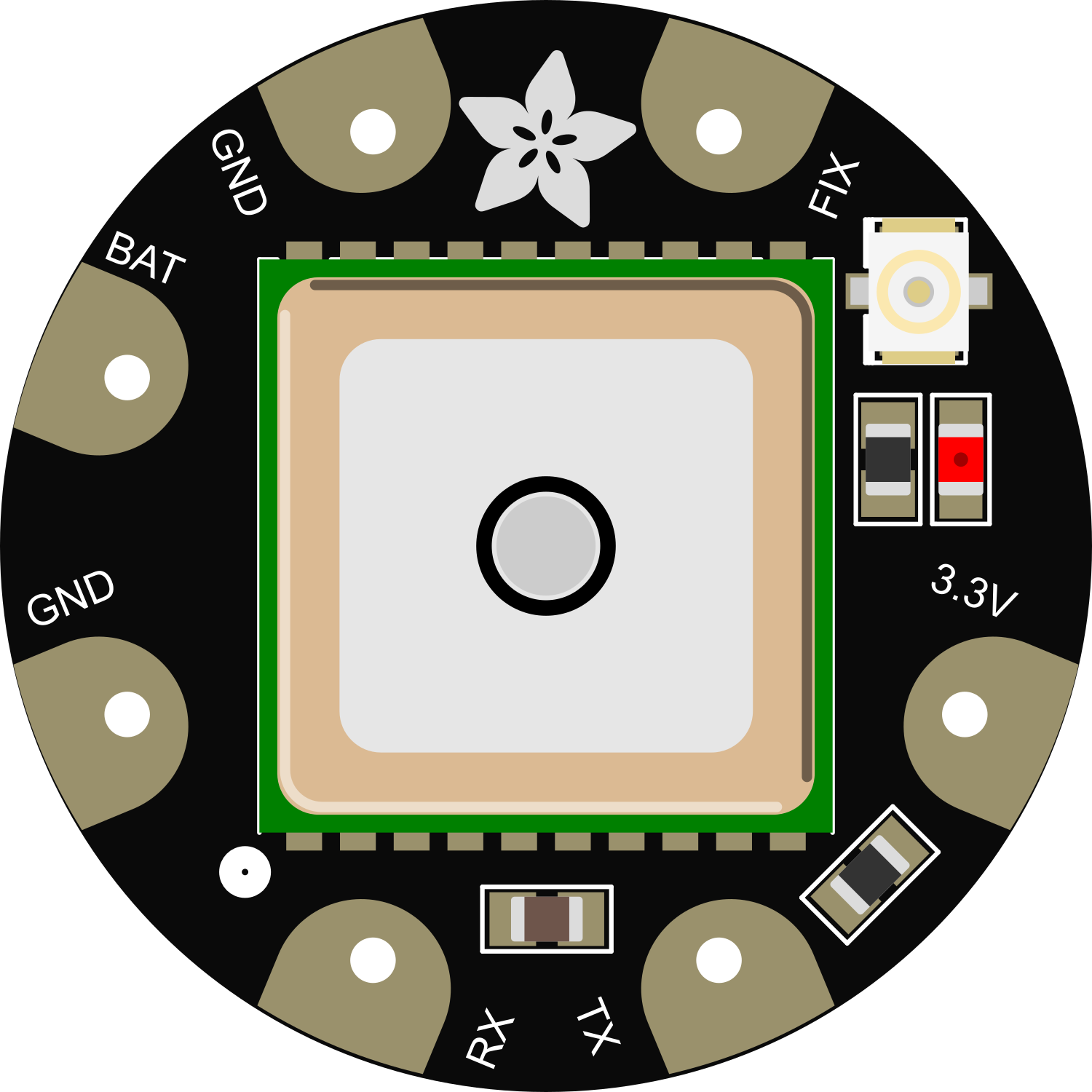
 Design with Flora GPS in Cirkit Designer
Design with Flora GPS in Cirkit DesignerIntroduction
The Flora GPS module is a compact, high-performance GPS receiver designed for seamless integration with the Adafruit Flora platform, a wearable electronics platform. This module is based on the u-blox GPS chipset and is capable of providing precise timing and positional data. It is ideal for location-based projects, wearable devices, and any application where small size and accurate GPS tracking are essential.
Explore Projects Built with Flora GPS
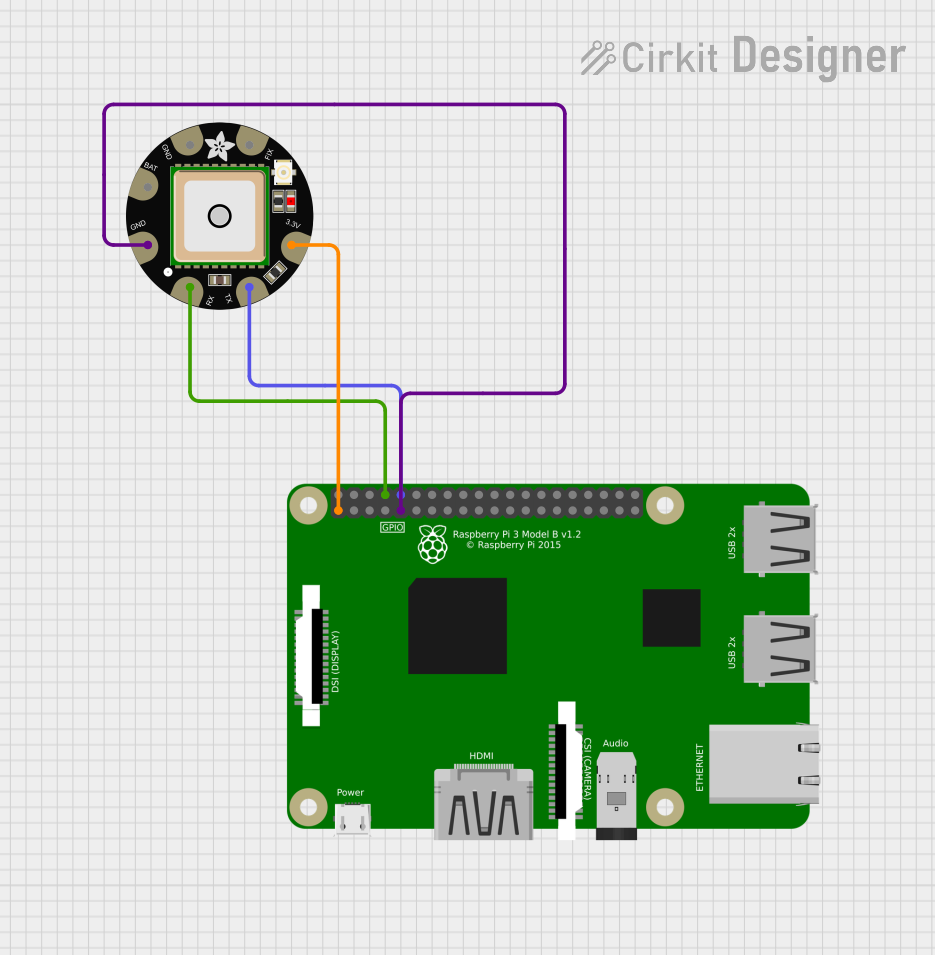
 Open Project in Cirkit Designer
Open Project in Cirkit Designer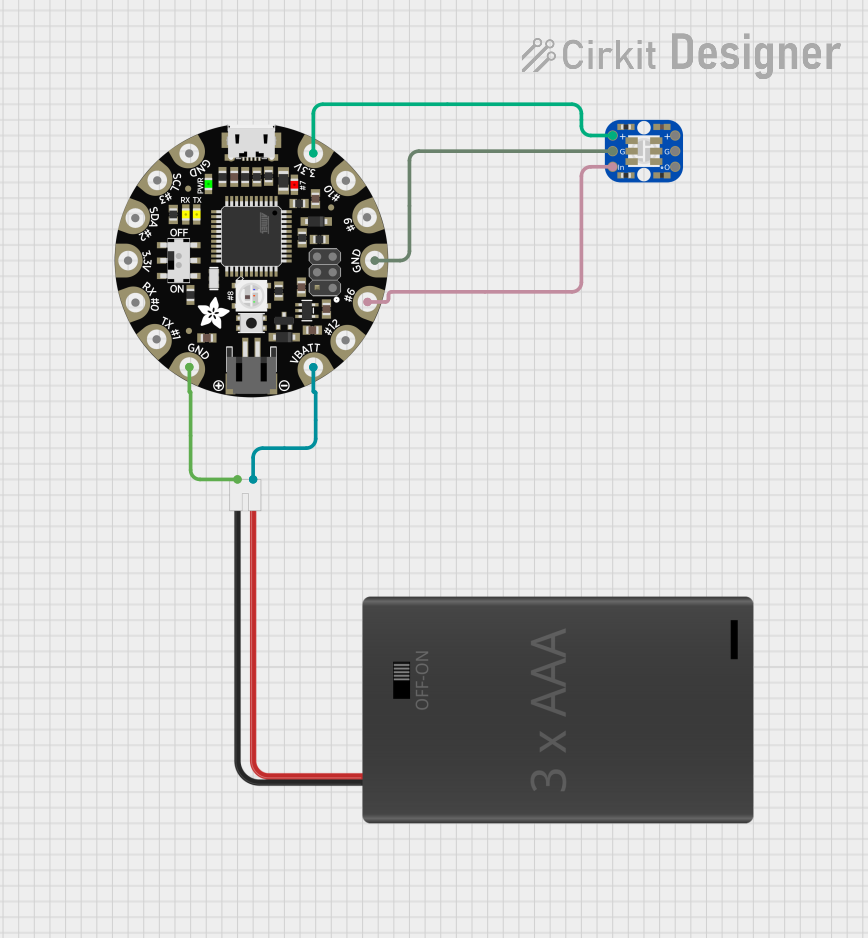
 Open Project in Cirkit Designer
Open Project in Cirkit Designer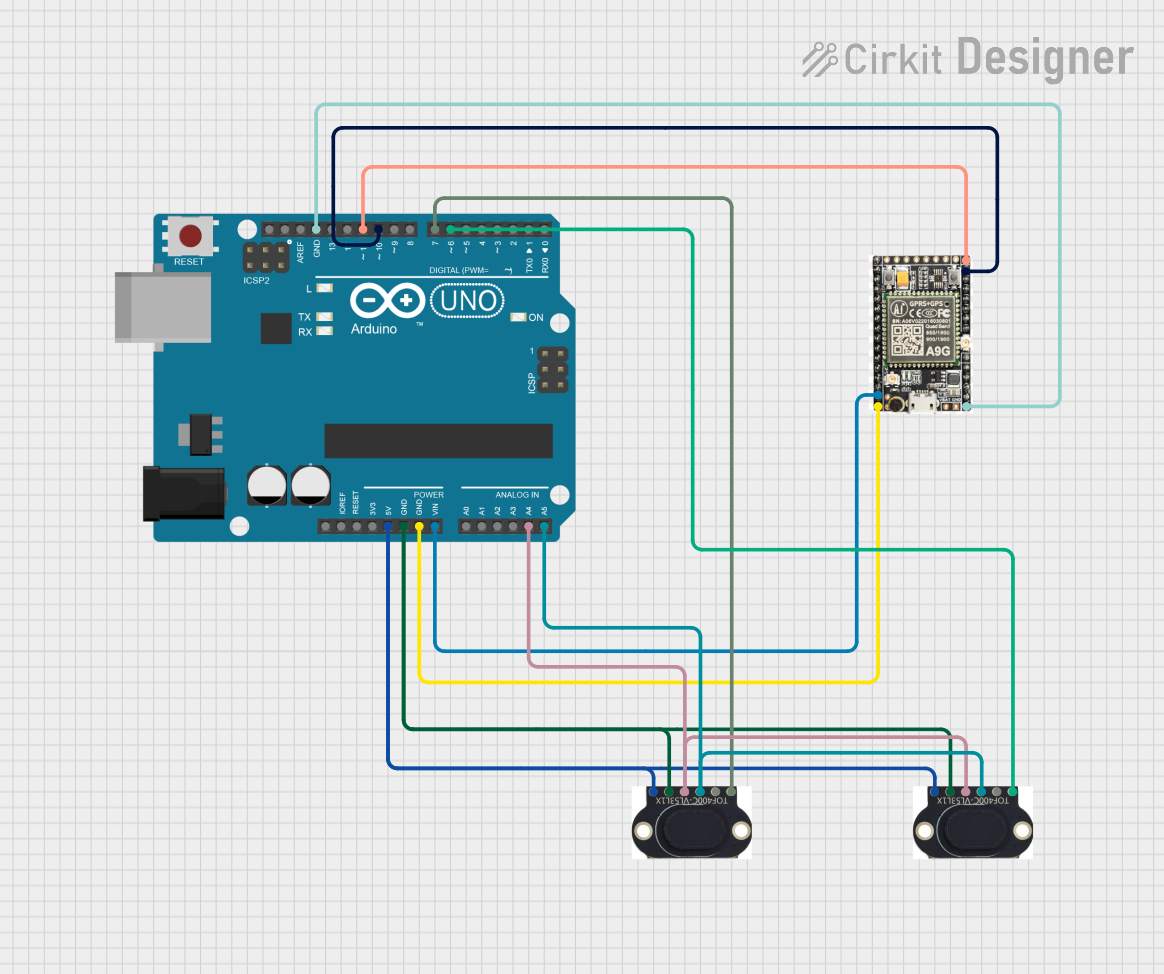
 Open Project in Cirkit Designer
Open Project in Cirkit Designer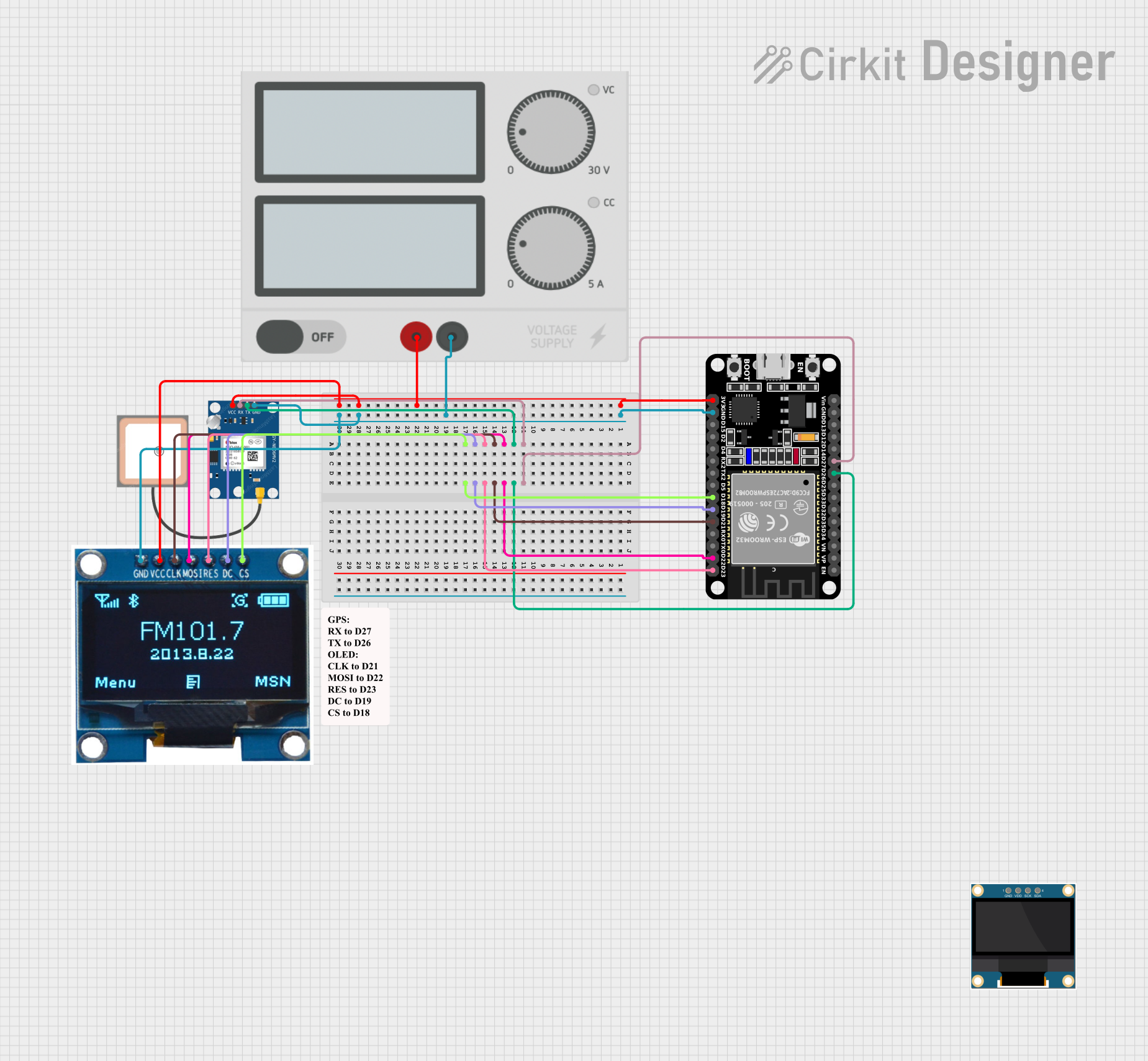
 Open Project in Cirkit Designer
Open Project in Cirkit DesignerExplore Projects Built with Flora GPS

 Open Project in Cirkit Designer
Open Project in Cirkit Designer
 Open Project in Cirkit Designer
Open Project in Cirkit Designer
 Open Project in Cirkit Designer
Open Project in Cirkit Designer
 Open Project in Cirkit Designer
Open Project in Cirkit DesignerCommon Applications and Use Cases
- Wearable GPS trackers
- Location-based interactive projects
- Data logging and mapping
- Time synchronization for events
Technical Specifications
Key Technical Details
- Chipset: u-blox GPS
- Update Rate: Up to 10 Hz
- Sensitivity: -160 dBm tracking, -148 dBm cold starts
- Accuracy: 2.5 meters (GPS), 2 meters (SBAS)
- Antenna: Built-in ceramic antenna
- Interface: I2C and UART serial
- Voltage: 3.3V to 5V supply input
- Current: 20mA average tracking current
Pin Configuration and Descriptions
| Pin Number | Name | Description |
|---|---|---|
| 1 | GND | Ground connection |
| 2 | VIN | Voltage input (3.3V to 5V) |
| 3 | RX | UART Receive pin |
| 4 | TX | UART Transmit pin |
| 5 | SCL | I2C Clock pin |
| 6 | SDA | I2C Data pin |
Usage Instructions
Integration with a Circuit
To use the Flora GPS module with the Adafruit Flora board:
- Connect the
VINpin of the GPS module to a 3.3V or 5V power supply. - Connect the
GNDpin to the ground on the Flora board. - For UART communication, connect the
RXpin of the GPS module to theTXpin on the Flora, and theTXpin to theRXpin on the Flora. - For I2C communication, connect the
SCLandSDApins to the corresponding I2C pins on the Flora board.
Important Considerations and Best Practices
- Ensure that the GPS module has a clear view of the sky for optimal performance.
- Avoid placing the module near devices that emit RF noise, as this can interfere with GPS signals.
- When using I2C, remember to include pull-up resistors if they are not already present on the Flora board.
Example Code for Arduino UNO
#include <SoftwareSerial.h>
#include <TinyGPS++.h>
// Define the RX and TX pins connected to the Flora GPS module
#define GPS_RX_PIN 4
#define GPS_TX_PIN 3
// Set up the software serial port
SoftwareSerial gpsSerial(GPS_RX_PIN, GPS_TX_PIN);
TinyGPSPlus gps;
void setup() {
// Start the serial communication with the host computer
Serial.begin(9600);
// Start the GPS communication
gpsSerial.begin(9600);
Serial.println("GPS Module Test");
}
void loop() {
// Check for new GPS data and parse it
while (gpsSerial.available() > 0) {
if (gps.encode(gpsSerial.read())) {
if (gps.location.isUpdated()) {
// Print the location if it's updated
Serial.print("Latitude: ");
Serial.println(gps.location.lat(), 6);
Serial.print("Longitude: ");
Serial.println(gps.location.lng(), 6);
}
}
}
}
Troubleshooting and FAQs
Common Issues
- No GPS Data: Ensure the module has a clear view of the sky and that the antenna is not obstructed.
- Inaccurate Position: Wait a few minutes for the GPS to get a fix. Initial accuracy may be lower until a stable connection with satellites is established.
- Intermittent Data: Check the wiring and solder joints for loose connections.
Solutions and Tips for Troubleshooting
- Power Cycle: Turn off the power to the module and the Flora board, wait a few seconds, and then turn it back on.
- Check Serial Connections: Ensure that the RX and TX pins are correctly connected and that the baud rate matches the GPS module's default rate.
- Use External Antenna: If the built-in antenna's performance is insufficient, consider using an external antenna with a u.FL connector if the module supports it.
FAQs
Q: How long does it take for the Flora GPS to get a fix? A: It can take anywhere from 30 seconds to several minutes for the GPS to get a fix, depending on conditions.
Q: Can I use the Flora GPS indoors? A: GPS signals are significantly weaker indoors. It's recommended to use the module outdoors or near a window for better reception.
Q: What is the power consumption of the Flora GPS? A: The module typically consumes around 20mA during tracking. Power consumption may vary based on usage and satellite conditions.